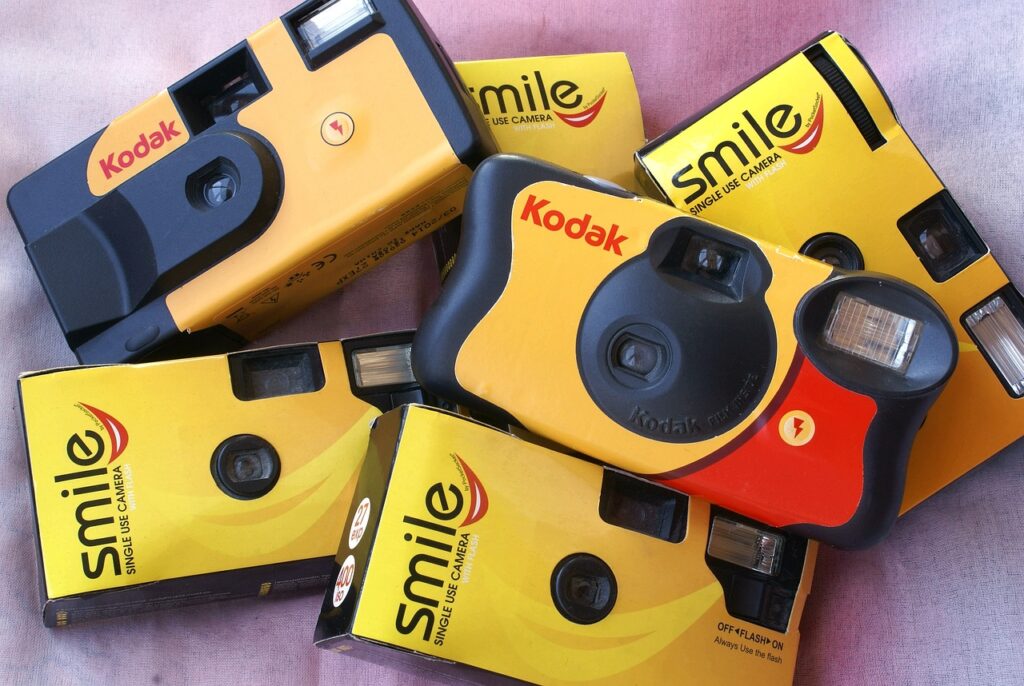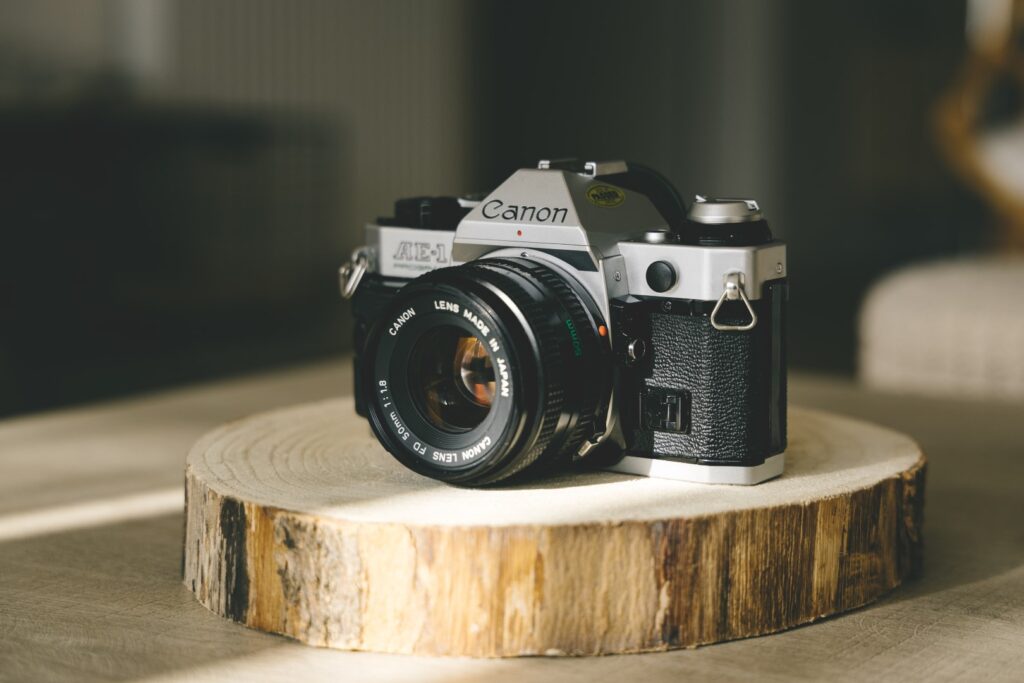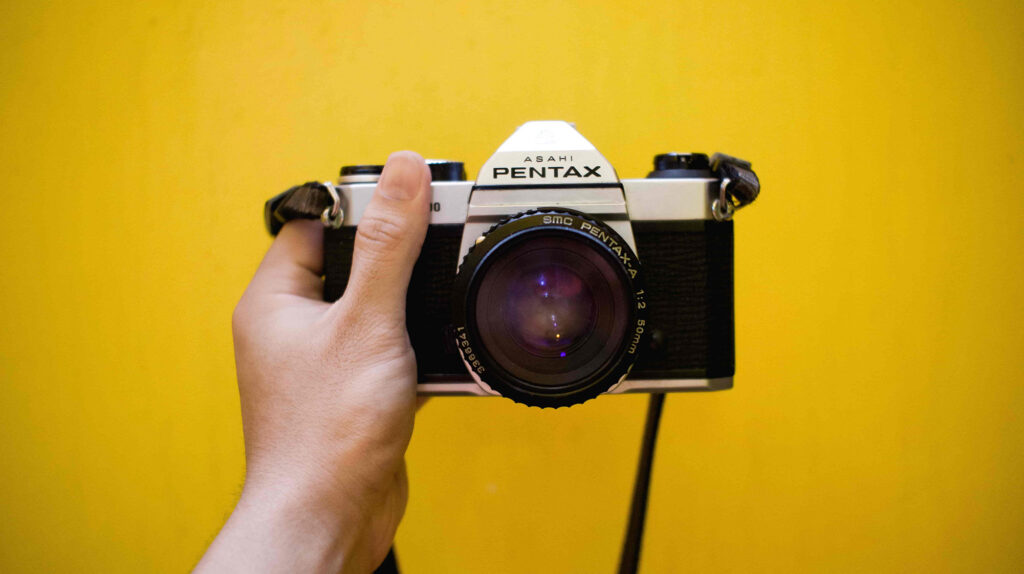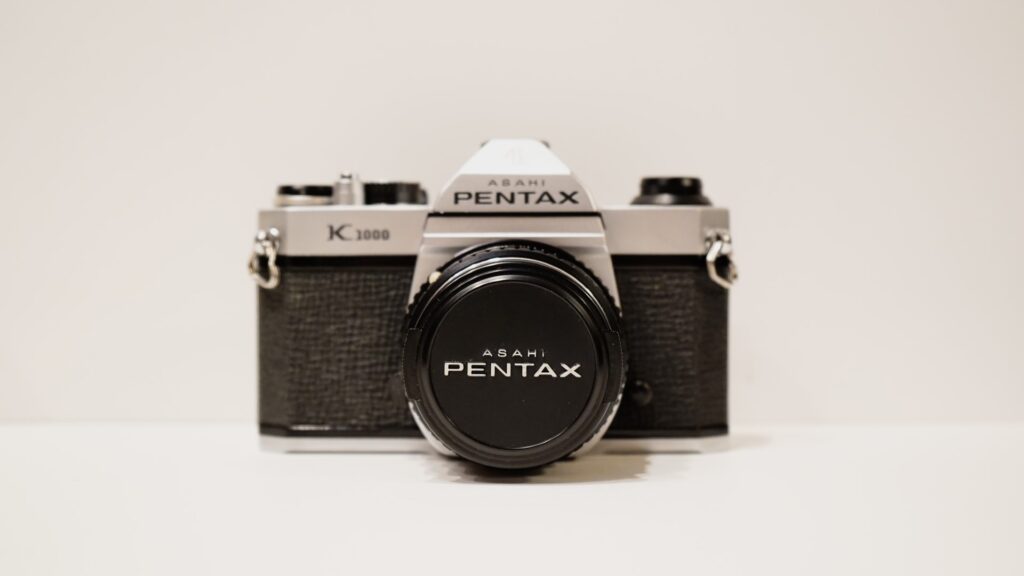In recent years, there has been a resurgence of interest in film photography, with both amateurs and professionals looking to capture memories through a different lens. One camera that has piqued the curiosity of many is the Kodak FunSaver disposable camera. With its user-friendly design and affordable price point, it has become a popular choice for those seeking a taste of film photography without committing to a more expensive camera.
As a result, we’ve noticed an influx of questions surrounding the Kodak FunSaver. In this article, we’ll address some of the most common inquiries to help you better understand this charming little camera and decide if it’s the right choice for your next photography adventure. So, let’s dive in and explore the ins and outs of the Kodak FunSaver disposable camera!
Is the Kodak FunSaver Waterproof?
When it comes to the Kodak FunSaver, many people wonder if this disposable camera is waterproof, making it suitable for adventures involving water. Well, the standard Kodak FunSaver is not waterproof. However, Kodak does offer a waterproof version of this camera, aptly named the Kodak Water & Sport.
The Kodak Kodak Water & Sport is designed specifically for water-based activities, such as swimming, snorkeling, and beach outings. It can typically withstand submersion in water up to 50 feet deep, allowing you to capture some stunning underwater shots without worrying about damaging the camera. So, if you’re planning a water-filled adventure and want to use a Kodak Disposable, make sure to pick up the waterproof version to ensure your camera is up to the task.
Does the Kodak FunSaver need batteries?
Now, you might be asking yourself, “Does the Kodak FunSaver need batteries?” The answer is yes, but you don’t have to worry about buying them separately. The FunSaver comes with its own built-in battery, typically a AA size. This battery is used to power the camera’s flash.
One of the beautiful things about the Kodak FunSaver is that the battery lasts for the entire roll of film, even if you use the flash for every single shot. That means you don’t need to worry about the battery dying mid-roll. You can simply keep snapping away until you’ve used up all the exposures.
And here’s a fun fact: after you’ve finished the roll, the battery often still has a good deal of life left in it. While the camera itself isn’t reusable, you can carefully open the camera body and remove the battery for other uses. So not only do you get a roll of precious memories, but you can also get a handy battery for other devices
How does the Kodak FunSaver work?
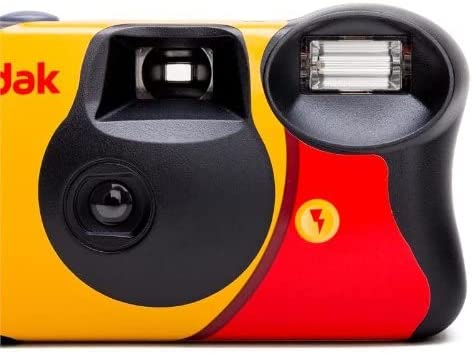
The Kodak FunSaver is all about simplicity, designed to bring the joy of film photography to everyone, regardless of their technical knowledge. So, how exactly does it work? Let’s break it down. To start, you need to advance the film by using the manual film advance wheel, located on the back right side of the camera. Give that wheel a good spin until it stops. This action readies your film for the first exposure.
Next, look through the viewfinder – that small square window on the back of the camera – and compose your shot. Remember, the FunSaver is a point-and-shoot camera. You don’t have to worry about focusing or adjusting the aperture.
Now, it’s time to fire the shutter. Press the shutter button located on the top right of the camera. The camera’s shutter opens briefly, allowing light to reach the film and create an image.
But what if you’re in a dimly lit environment? That’s when the FunSaver’s built-in flash comes into play. There’s a small button to activate the flash on the front side of the camera. Once it’s ready (you’ll see a flash-ready red indicator light on top of the camera), you can take your shot, and the flash will automatically fire.
After taking your shot, don’t forget to advance the film again using the same wheel as before. Repeat the process until you’ve used up all the exposures.
When you’ve taken all your shots, it’s time to get the film developed. Remember, the film inside the FunSaver is light-sensitive. So, don’t open the camera yourself; take it to a film processing lab. So there you have it, the basic operation of the Kodak FunSaver. It’s as simple as point, shoot, and advance!
What film does the Kodak FunSaver use?
One of the key questions about the Kodak FunSaver revolves around the type of film it uses. The beauty of the FunSaver is that it comes pre-loaded with Kodak’s own color negative film, specifically some type of Kodak 800 ISO film, however it is not exactly specified which film stock/emulsion they are using here.
For those of you new to film photography, ISO refers to the film’s sensitivity to light. An ISO of 800 means the film is quite versatile, able to handle a range of lighting situations – from bright outdoor light to indoor settings where the light might not be as abundant.
Where can you get the camera developed?
Now that you’ve filled your Kodak FunSaver with a host of precious memories, the next step is getting the film developed. But where can you do this?
Many local drugstores and supermarkets still offer film processing services. Stores like Walgreens or CVS in the United States, for example, often have a photo department that can handle your FunSaver. Keep in mind, though, that not all locations will offer this service, so it’s a good idea to call ahead and confirm. I would also always advise against using one of the bigger stores like Walgreens or CVS as they typically do not provide you the negatives and the overall quality sometimes is not to good.
Then there are dedicated photography stores. These places are staffed by professionals who live and breathe photography. They can develop your film, and often offer additional services, such as making prints or digitizing your photos.
Don’t have these options nearby? No worries, online mail-in services are here to help. Companies like The Darkroom or Dwayne’s Photo allow you to mail your FunSaver camera to them. They’ll process the film and then send you the negatives, along with prints or digital copies, depending on what you choose.
Remember, the Kodak FunSaver is a one-time-use camera, so you’ll need to send in the entire camera for processing. Whichever option you choose, you’ll soon have a tangible record of your memories, ready to be shared and enjoyed.
How many pictures can I take with a Kodak Funsaver disposable camera?
When you pick up a Kodak FunSaver, one of the first things you’ll likely ask is, “How many pictures can I take with this camera?” Here’s the exciting news: a brand-new Kodak FunSaver typically comes loaded with 27 exposures. There is a 27 + 12 Version available as well, usually with a similar price, so it always makes sense to get this model if you can.
That might not seem like a lot compared to the hundreds or even thousands of photos you can store on a digital device. But consider this: each one of those 27 shots is a chance to slow down and really think about the image you’re creating. It’s about quality over quantity. Every click of the shutter becomes a thoughtful decision, making each photo that much more special. So, while the number might seem small, those 27 exposures can hold a whole lot of memories. Happy shooting!
Where can you buy the FunSaver?
Luckily, the FunSaver is fairly easy to find, both in physical stores and online. For brick-and-mortar shopping, check out your local photography or electronics stores. They often carry a range of cameras, including disposables like the FunSaver. Even some larger supermarket chains or drugstores might have a photography section where you can find the FunSaver.
If online shopping is more your speed, there’s a wealth of options. Big online retailers like Amazon and B&H Photo typically stock the FunSaver.
How do I get the photos onto my phone?
In today’s digital world, it’s natural to want to share your favorite shots on social media or keep them handy on your phone. So, how do you get the physical photos from a Kodak FunSaver onto your smartphone? Let’s go through the steps.
First, you’ll need to get your film developed. As we discussed earlier, you can do this at local drugstores, dedicated photography stores, or through online mail-in services. When getting your film developed, ask for a digital copy of your photos. Most film labs nowadays offer a digitization service, where they scan your negatives and provide you with digital files, usually in the form of a CD, USB drive, or even a direct download link.
Once you have your digital files, it’s a simple matter of getting them onto your phone. If the files are on a CD or USB drive, transfer them to your computer first. From there, you can email the photos to yourself, upload them to a cloud service like Google Drive or Dropbox, or use any number of other methods to get them onto your phone.
If you received a download link from the film lab, you can directly access and download the files onto your smartphone, assuming you have a good internet connection. And there you have it! Your film photos are now digital, ready to be shared on Instagram, added to your digital album, or used as a unique, personal wallpaper for your phone. It’s a blend of old-school charm and modern convenience.
What is the film speed (ISO) of the Kodak Funsaver disposable camera?
When we talk about film photography, the term “ISO” or film speed often comes up. So, what exactly is the ISO of the Kodak Funsaver disposable camera?
The Kodak Funsaver is pre-loaded with ISO 800 film. But what does this number mean for your photographs? ISO is a measure of how sensitive the film is to light. A lower ISO number, like 100 or 200, requires more light for a proper exposure, but it provides very fine detail and minimal grain. A higher ISO number, like 800, is more sensitive to light, which makes it excellent for indoor and low-light conditions.
The ISO 800 film in the Kodak Funsaver strikes a good balance. It’s versatile and can handle a variety of lighting situations, from bright daylight to dimmer indoor scenes. You may notice more grain on your photos compared to lower ISO films, but this grain can add a distinctive, often desired, character to your images.
So, the next time you’re snapping away with your Kodak Funsaver, remember that behind every shot is the power of ISO 800 film – ready to turn light into vibrant, memorable images.

How long will the battery last in a Kodak Funsaver disposable camera?
Let’s talk about the battery life in a Kodak Funsaver disposable camera. One of the neat things about the FunSaver is that it comes with its own built-in battery, typically a AA size, and it’s designed to last. So, how long can you expect the battery to last? Essentially, the battery in a FunSaver is designed to last for the entire roll of film – all 27 shots. This holds true even if you use the flash for every single photo, which is the feature that consumes the most energy in the camera.
Here’s the intriguing part: once you’ve taken all the shots and you’re ready to get your film developed, the battery often still has a good amount of juice left in it. So, even though you can’t reuse the camera itself, you can carefully open the camera body and retrieve the battery for other uses. It’s a little bonus that comes after enjoying the fun of shooting with a disposable camera. Remember, always be careful when opening any electronic device. But with a little caution, you can get even more value from your Kodak Funsaver. It’s the camera that keeps on giving!
Conclusion
Well, folks, we’ve taken a deep dive into the world of the Kodak FunSaver disposable camera. We’ve explored its features, dissected its workings, and even touched on the possibilities it offers once you’ve clicked through all those precious exposures. With 27 chances to capture your unique perspective, the FunSaver invites you to slow down and consider each shot. It’s a ticket to a more thoughtful, deliberate form of photography, wrapped up in a convenient, user-friendly package.
So, why not give it a try? Pick up a Kodak FunSaver and step into the vibrant, tactile world of film photography. You never know – you might just find that this little disposable camera opens up a whole new way of seeing the world. Happy shooting!

